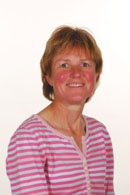 Background: Over a billion people, 15% of the world’s population, live with a disability (WHO, 2016). People with disabilities have poor oral health, high levels of unmet need and often limited access to oral health care facilities (Coyle et al., 2004; Ahmad et al., 2015). The dental profession has a social responsibility to provide equitable oral health care for all and this is recognised in the General Dental Council document ‘Preparing for Practice’, which states “ registrants must be able to recognise the needs of all patients, including those with special care requirements”. This raises the question, are we adequately preparing future dental professionals to fulfil their obligations.
Background: Over a billion people, 15% of the world’s population, live with a disability (WHO, 2016). People with disabilities have poor oral health, high levels of unmet need and often limited access to oral health care facilities (Coyle et al., 2004; Ahmad et al., 2015). The dental profession has a social responsibility to provide equitable oral health care for all and this is recognised in the General Dental Council document ‘Preparing for Practice’, which states “ registrants must be able to recognise the needs of all patients, including those with special care requirements”. This raises the question, are we adequately preparing future dental professionals to fulfil their obligations.
Understanding how students view the phenomena from an educational and social perspective, considering the interplay between these factors during their professional development as they prepare for clinical practice, led to the specific research questions.
Aim: To explore final year dental students’ insight into issues of disability, in order to inform the undergraduate Special Care Dentistry programme.
Research Questions
1. What are students’ perceptions of their preparedness to meet the needs of patients with disabilities?
2. What has influenced this sense of preparedness?
Method: Using a broadly phenomenological approach, two focus groups were employed to address the research questions. Sixteen final year dental students, attending Newcastle School of Dental Sciences participated. The recorded discussions were transcribed and analysed using thematic analysis, as described by Braun and Clark (2006).
Results:
In relation to the research questions, there was a noticeable variation in students’ perceptions relating to their preparedness. This variation appeared to be related to several influencing factors which can be linked to the emergent themes from the focus group discussions, namely; ‘Perceptions about disability’, ‘Experience of Disability’, ‘Patient Management’ and ‘Teaching and Learning’. These themes are not independent of each other; elements of each will be drawn upon and woven together during the formative years from undergraduate to practicing clinician, influencing the extent of self-efficacy beliefs and how prepared students feel about meeting the needs of those with disabilities. For example, perceptions will be influenced by experience, both from a social context and clinical and educational perspective. Clinical experience itself will be related to patient management and the teaching and learning element of their undergraduate education.
Conclusion:
The results of the study resonate with the majority of the literature, in that students reported different levels of experience and knowledge of disability and varying degrees of preparedness and self-efficacy in meeting patients’ needs. Closely aligned to Banduras theory of Self-efficacy (Bandura, 1994) which considers ‘mastery experience’ to be the most powerful influence of efficacy beliefs, students who had encountered people with disabilities at a social level, through volunteering, family or friends, had a strong sense of self-efficacy; added to this, if clinical exposure was reported, students again felt more comfortable dealing with this patient group. All agreed that the benefits of social and or clinical interaction with the disabled community would greatly enhance their professional development.
Drawing on the literature and outcomes of the study, as emphasised by Goss (2007), there is a need to nurture positive attitudes towards those with disabilities to reduce social factors contributing to health inequalities. It is therefore imperative the dental profession focus on providing appropriate education, including exposure to people with disabilities, at undergraduate and post-graduate level.
Project team: Dr Kathy Wilson (Dept of Sedation), Dr Richard Holmes (Dental Public Health), Miss Kate Bird (5th Year BDS), Dr Laura Delgaty (SME)
References
Ahmad, M.S., Razak, I.A. and Borromeo, G.L. (2015) ‘Special needs dentistry: perception, attitudes and educational experience of Malaysian dental students’, Eur J Dent Educ, 19(1), pp. 44-52.
Bandura, A. (1994) Self Efficacy. Available at: www.uky.edu/~eushe2/Bandura/Banency.html.
Braun, V. and Clarke, V. (2006) ‘Using thematic analysis in psychology’, Qualitative Research Psychology, 3, pp. 77-101.
Coyle, C., Saunderson, W. and Freeman, R. (2004) ‘Dental students, social policy students and learning disability: do differing attitudes exist?’, Eur J Dent Educ, 8(3), pp. 133-9.
Goss, N. (2007) ‘What do we mean by disability and equality in oral health? Editorial’, Journal of Disability and Oral Health, 8(3).
WHO (2016) 10 Facts on Disability. Available at: http://www.who.int/features/factfiles/disability/facts/en/{Accessed
